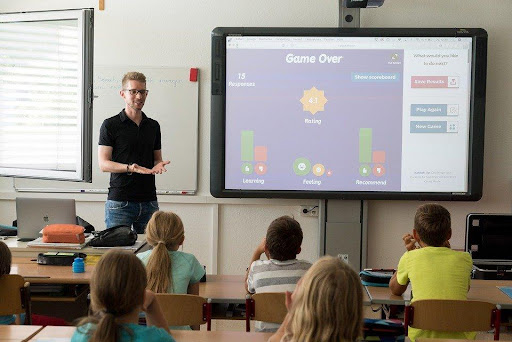Why The Future Of Online Education Looks Bright
The future of online education looks brighter than ever before. With technological advances, the traditional approach to learning has shifted drastically, and more and more people are turning to online education as an alternative to the traditional classroom setting. From asynchronous learning models to interactive virtual classrooms, online education has come a long way in recent years, and the possibilities for its continued growth are exciting. In this article, we will discuss how the future of online education looks bright and the potential it holds for learners of all ages.
Personalized Learning
Online education has opened up opportunities for students to pursue education that fits their unique needs. The personalization of education also allows more flexibility concerning time management. Students can work around other commitments, such as a job or family obligations, and still be able to get the education they need. Additionally, the increased availability of career and professional development courses makes it easier for professionals to expand their knowledge base and stay current.
Furthermore, many degree options are available online, ranging from associate degrees to doctoral programs, allowing students to pursue their academic goals without needing to travel or relocate. Students can tailor their studies with personalized learning to fit their interests and goals. For instance, there are several nursing programs online available for aspiring nurses, along with a wide array of healthcare-related majors. The courses are designed to give students a comprehensive understanding of the field, including medical principles and practices, as well as critical thinking and problem-solving skills.
Overall, the future of online education looks bright. With the rise of personalized learning, students have greater access to quality programs and courses at affordable prices. It increases the chances of success for those looking to further their educational endeavors or advance their career prospects.
Technology
Online education has come a long way since its beginnings in the late 1990s. The internet and advances in digital technology have revolutionized education, giving students access to courses, lectures, and learning materials from anywhere in the world.
Today, technology plays a vital role in the field of online education. Schools and universities increasingly use digital platforms to deliver lectures and host student discussions. Online course delivery systems allow teachers to provide multimedia content like videos, images, and text. In addition, they can use artificial intelligence tools to assess student performance and provide feedback.
According to the American Institutes for Research, 98% of students in the United States are using some form of online education. It includes synchronous (real-time) and asynchronous (non-real-time) learning models. Furthermore, a recent Software & Information Industry Association survey found that 72% of colleges now offer at least one online degree program.
Regarding accessibility, mobile devices like tablets and smartphones are essential for students to keep up with their classes. According to the same Software & Information Industry Association survey, 74% of college students use their mobile devices at least once a week for educational purposes.
Finally, technological advances have made it easier for schools to collaborate with other institutions, such as those in foreign countries. It opens up even more opportunities for students worldwide to connect with peers, engage in online discussions, and exchange ideas.
It is clear that technology has had a significant impact on the future of online education and will continue to play an even more substantial role in the years to come. With new tools and platforms being developed every day, there is no doubt that students will benefit from more options and improved experiences.
Cost-Effectiveness
Online education costs have become increasingly more competitive than traditional on-campus tuition costs. It is primarily due to the lower overhead costs of running an online learning platform and the increased availability of free and low-cost educational resources. For example, many students can access free MOOCs (Massive Open Online Courses) from leading universities. Students can get a top-tier education without paying tuition or incurring other costs associated with on-campus education.
Online programs can offer quality educational content at reduced rates compared to traditional universities. At the same time, there are also cost savings regarding physical infrastructure and personnel costs. For example, online courses don't require physical classrooms or additional staffing for course-related tasks.
Overall, online education is cost-effective for those seeking higher education without the hefty price tag associated with traditional universities.
Increased Accessibility
Online education is one of the most accessible forms of learning available today. It has opened up educational opportunities to people who may have previously not been able to access traditional education due to geographical or financial restrictions. With no physical presence necessary, students can access course material from anywhere in the world.
Many online courses are open to anyone, regardless of prior educational experience. That means that students can learn a wide range of topics from experts in the field, and they don't have to worry about being held back by their qualifications. They can also access courses specifically designed for different age groups, so that younger learners can benefit from tailored lessons.
Furthermore, language barriers no longer limit access to education since many courses are available in multiple languages. It is especially beneficial for international students or those who have English as a second language. Online classes make it easier for them to access the same material as everyone else without worrying about having difficulty understanding the language.
In short, online education has made education more accessible than ever before. It has enabled students worldwide to get involved in educational activities without worrying about geographic or financial constraints. It has opened the possibility of quality education for those who may have otherwise been excluded from traditional learning environments.
Artificial Intelligence
AI, a radical approach, has changed the entire learning process. Determining what a learner knows and does not know aids in the discovery of knowledge gaps. Once the gaps are found, it aids in creating creative content where AI makes learning interfaces with customizable options for viewing data and updating learning materials. A great method to enhance the current learning environment is by giving students the essential learning tools and adding virtual teaching professionals to your faculty.
Because they are computer-based, AI bots can answer questions anytime and from any location. Additionally, it aids in automating administrative processes like grading, assessments, record keeping, and feedback so that teachers can concentrate on their primary duties of teaching.
By 2030, the market for AI in education is expected to be worth more than USD 80 billion. It will give students and teachers tools to increase productivity, streamline daily tasks, improve accessibility, and scale processes to meet specific needs.
Conclusion
The future of online education looks bright. The accessibility, quality, and personalization of online education continue to improve each day, making it an excellent option for anyone looking to further their education or career. Additionally, the cost-effectiveness of online learning makes it an attractive choice for learners looking to pursue educational opportunities without breaking the bank. Ultimately, the advancements in technology that have made online education possible are providing more individuals with the opportunity to acquire knowledge and skills effectively and efficiently.




